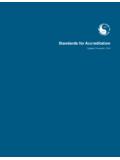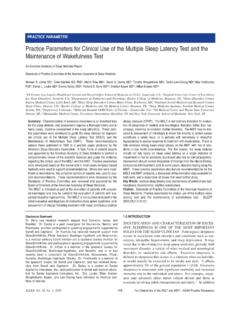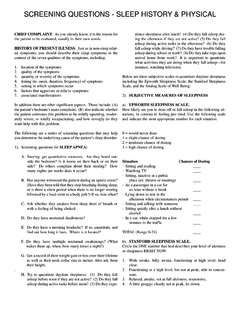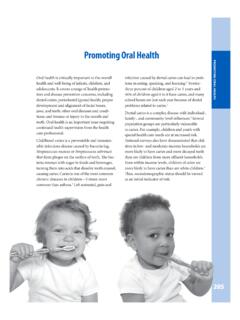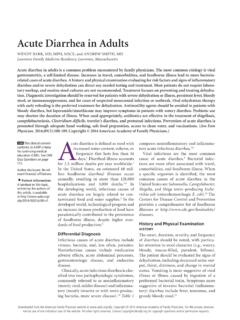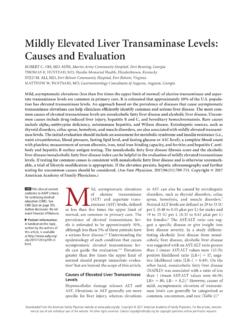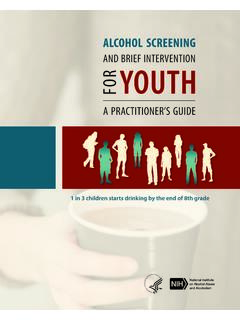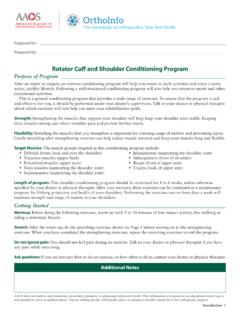Transcription of Pharmacologic Treatment of Insomnia - American Academy …
1 307 Journal of Clinical Sleep Medicine, Vol. 13, No. 2, 2017 Introduction: The purpose of this guideline is to establish clinical practice recommendations for the Pharmacologic Treatment of chronic Insomnia in adults, when such Treatment is clinically indicated. Unlike previous meta-analyses, which focused on broad classes of drugs, this guideline focuses on individual drugs commonly used to treat Insomnia . It includes drugs that are FDA-approved for the Treatment of Insomnia , as well as several drugs commonly used to treat Insomnia without an FDA indication for this condition.
2 This guideline should be used in conjunction with other AASM guidelines on the evaluation and Treatment of chronic Insomnia in : The American Academy of Sleep Medicine commissioned a task force of four experts in sleep medicine. A systematic review was conducted to identify randomized controlled trials, and the Grading of Recommendations Assessment, Development, and Evaluation (GRADE) process was used to assess the evidence. The task force developed recommendations and assigned strengths based on the quality of evidence, the balance of benefits and harms, and patient values and preferences.
3 Literature reviews are provided for those Pharmacologic agents for which sufficient evidence was available to establish recommendations. The AASM Board of Directors approved the final : The following recommendations are intended as a guideline for clinicians in choosing a specific pharmacological agent for Treatment of chronic Insomnia in adults, when such Treatment is indicated. Under GRADE, a STRONG recommendation is one that clinicians should, under most circumstances, follow. A WEAK recommendation reflects a lower degree of certainty in the outcome and appropriateness of the patient-care strategy for all patients, but should not be construed as an indication of ineffectiveness.
4 GRADE recommendation strengths do not refer to the magnitude of Treatment effects in a particular patient, but rather, to the strength of evidence in published data. Downgrading the quality of evidence for these treatments is predictable in GRADE, due to the funding source for most pharmacological clinical trials and the attendant risk of publication bias; the relatively small number of eligible trials for each individual agent; and the observed heterogeneity in the data. The ultimate judgment regarding propriety of any specific care must be made by the clinician in light of the individual circumstances presented by the patient, available diagnostic tools, accessible Treatment options, and We suggest that clinicians use suvorexant as a Treatment for sleep maintenance Insomnia (versus no Treatment ) in adults.
5 (WEAK)2. We suggest that clinicians use eszopiclone as a Treatment for sleep onset and sleep maintenance Insomnia (versus no Treatment ) in adults. (WEAK)3. We suggest that clinicians use zaleplon as a Treatment for sleep onset Insomnia (versus no Treatment ) in adults. (WEAK)4. We suggest that clinicians use zolpidem as a Treatment for sleep onset and sleep maintenance Insomnia (versus no Treatment ) in adults. (WEAK)5. We suggest that clinicians use triazolam as a Treatment for sleep onset Insomnia (versus no Treatment ) in adults. (WEAK)6. We suggest that clinicians use temazepam as a Treatment for sleep onset and sleep maintenance Insomnia (versus no Treatment ) in adults.
6 (WEAK)7. We suggest that clinicians use ramelteon as a Treatment for sleep onset Insomnia (versus no Treatment ) in adults. (WEAK)8. We suggest that clinicians use doxepin as a Treatment for sleep maintenance Insomnia (versus no Treatment ) in adults. (WEAK)9. We suggest that clinicians not use trazodone as a Treatment for sleep onset or sleep maintenance Insomnia (versus no Treatment ) in adults. (WEAK)10. We suggest that clinicians not use tiagabine as a Treatment for sleep onset or sleep maintenance Insomnia (versus no Treatment ) in adults. (WEAK)11. We suggest that clinicians not use diphenhydramine as a Treatment for sleep onset and sleep maintenance Insomnia (versus no Treatment ) in adults.
7 (WEAK)12. We suggest that clinicians not use melatonin as a Treatment for sleep onset or sleep maintenance Insomnia (versus no Treatment ) in adults. (WEAK)13. We suggest that clinicians not use tryptophan as a Treatment for sleep onset or sleep maintenance Insomnia (versus no Treatment ) in adults. (WEAK)14. We suggest that clinicians not use valerian as a Treatment for sleep onset or sleep maintenance Insomnia (versus no Treatment ) in adults. (WEAK)Keywords: Insomnia , Treatment , Pharmacologic , guidelineCitation: Sateia MJ, Buysse DJ, Krystal AD, Neubauer DN, Heald JL.
8 Clinical practice guideline for the Pharmacologic Treatment of chronic Insomnia in adults: an American Academy of Sleep Medicine clinical practice guideline. J Clin Sleep Med. 2017;13(2):307 ARTICLESC linical Practice Guideline for the Pharmacologic Treatment of Chronic Insomnia in Adults: An American Academy of Sleep Medicine Clinical Practice GuidelineMichael J. Sateia, MD1; Daniel J. Buysse, MD2; Andrew D. Krystal, MD, MS3; David N. Neubauer, MD4; Jonathan L. Heald, MA51 Geisel School of Medicine at Dartmouth, Hanover, NH; 2 University of Pittsburgh School of Medicine, Pittsburgh, PA; 3 University of California, San Francisco, San Francisco, CA; 4 Johns Hopkins University School of Medicine, Baltimore, MD.
9 5 American Academy of Sleep Medicine, Darien, ILpii: jc-00382-16 of Clinical Sleep Medicine, Vol. 13, No. 2, 2017MJ Sateia, DJ Buysse, AD Krystal, et al. Clinical Practice Guideline: InsomniaTABLE OF CONTENTSI ntroduction 308 Background 309 Methodology 312 Clinical Practice Recommendations 315 Orexin receptor agonists Suvorexant 317 Benzodiazepine receptor agonists Eszopiclone 318 Zaleplon 321 Zolpidem 323 Benzodiazepines Triazolam 326Te m a z e p a m 327 Melatonin agonists Ramelteon 329 Heterocyclics Doxepin 331 Trazodone 332 Anticonvulsants Tiagabine 333 Over-the-counter preparations Diphenhydramine 334 Melatonin 335L-tryptophan 337 Valerian 338 Literature Reviews 338 Estazolam 338 Quazepam 339 Flurazepam 340
10 Oxazepam 341 Quetiapine 341 Gabapentin 341 Paroxetine 341 Trimipramine 342 Discussion and Future Directions 342 INTRODUCTIONAimsThis clinical practice guideline was initiated at the request of the Board of Directors of the American Academy of Sleep Medicine (AASM), who also reviewed this document and provided feedback. No formal clinical practice guidelines for the pharmacological Treatment of Insomnia have previously been issued by the AASM, despite the fact that this remains, by far, the most common approach to therapy, after Treatment of comorbidities.
